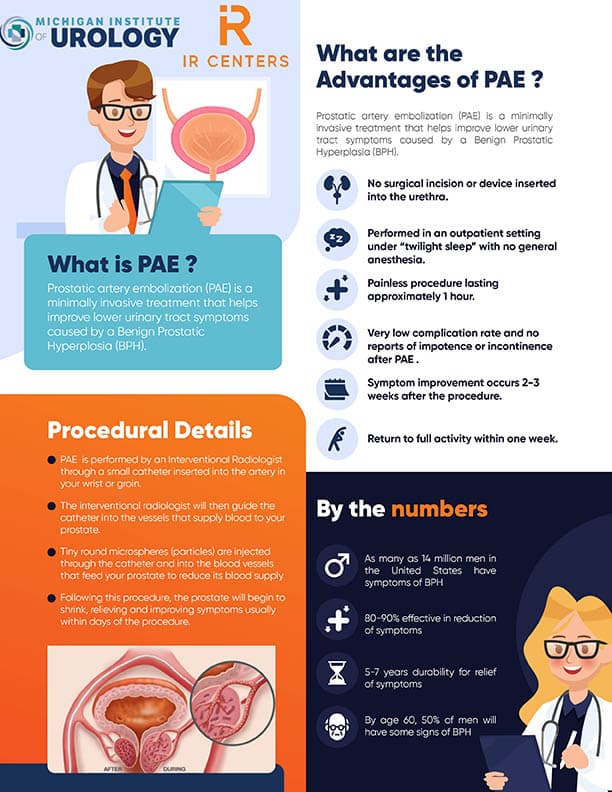Interventional Radiology (IR) Center
Interventional Radiology – The IR Center at Michigan Institute of Urology
Many conditions that once required surgery now can be treated with interventional radiology. IR treatments are minimally invasive. When compared to open surgery, minimally invasive treatments result in:
- Less risk of complications
- Less pain
- Faster recovery
Embolization is a minimally invasive treatment that blocks one or more blood vessels or abnormal vascular channels. Carefully guided by radiologic imaging like CT and ultrasound, radiologists perform embolization using small tools like catheters and wires to treat patients for conditions including:
- BPH (enlarged prostate)
- Varicoceles treatment for male infertility
- Uterine fibroid embolization
- Ovarian vein embolization for pelvic congestion syndrome
- Hemorrhoid artery embolization
Talk to your urologist to find out if you are a candidate for a minimally invasive IR treatment.

Scott Schwartz, M.D.
Prostate Artery Embolization (PAE) treatment for Benign Prostatic Hyperplasia (BPH)
Prostate artery embolization is an ideal treatment for men suffering from benign prostatic hyperplasia (BPH) with very large prostates.
Could PAE be right for you?
You can also contact the IR Center directly at miu@ircenters.com or 947-999-8244.
Additional Resources
The PAE Procedure
- Reduced blood flow to the prostate, causing it to shrink over time
- A small catheter inserted into the artery at the top of the leg
- Catheter guided into the vessels that supply prostate
- Tiny round microspheres (particles) are injected through the catheter and into the blood vessels that feed your prostate to reduce its blood supply.

*Image copyright Termo Hydropearl
PAE Procedure – What to Expect
- Procedure takes 45-90 minutes
- Done in office
- Not painful
- Given light sedation
- Bed rest for 2 hours
- Symptoms start to improve in 3 weeks
- Improvement continues for several months
- Side effects in the first week
- Temporary worsening of existing symptoms
- Feel like you have a urinary tract infection
- Medications are given to counteract side effects
- 85 – 90% success rate
- Average durability of 5-7 years
PAE Procedure – Advantages
- Minimally invasive
- No surgical incision or device inserted into the penis
- Performed in an outpatient setting
- Very low complication rate and no reports of impotence or incontinence after PAE
- Return to full activity in one week


